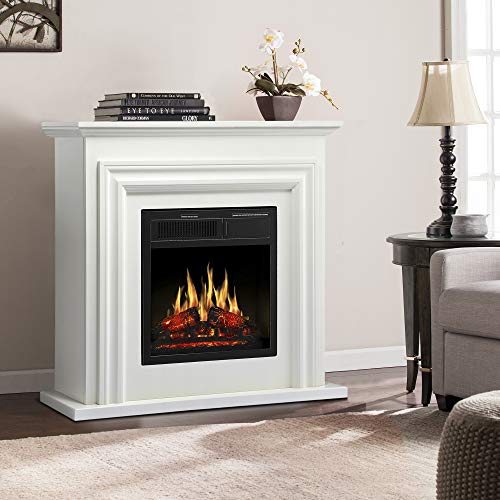How Much Do Energy Efficient Fireplaces For Sale Experts Earn?
Energy Efficient Fireplaces For Sale: A Comprehensive Guide
In the last few years, the focus on energy efficiency in home heating has actually intensified due to increasing energy costs and increasing environmental issues. Energy-efficient fireplaces use a sustainable alternative to traditional heating methods, delivering heat and ambiance without the extreme fuel usage associated with traditional fireplaces. This post dives into the advantages of energy-efficient fireplaces, explores the numerous types available, provides important buying suggestions, and answers frequently asked concerns.
The Benefits of Energy Efficient Fireplaces
Energy-efficient fireplaces offer various advantages that extend beyond simple warmth. Here are some key benefits:
Reduced Energy Consumption: These fireplaces take in less fuel while creating a comparable amount of heat, making them economical.
Lower Emissions: With sophisticated innovation designed to burn fuel more entirely, energy-efficient fireplaces substantially lower hazardous emissions.
Enhanced Home Value: Installing a modern, energy-efficient fireplace can increase a home's resale value and visual appeal.
Increased Heating Capacity: Many energy-efficient models supply better heating protection, focusing warmth in larger areas compared to traditional options.
Style Versatility: Available in numerous designs, energy-efficient fireplaces can complement any interior decoration style.
Alternative Fuel Options: Many energy-efficient fireplaces can work on renewable resources such as wood pellets, bioethanol, or natural gas.
Types of Energy Efficient Fireplaces
Choosing the ideal energy-efficient fireplace for a home depends on individual choices, space constraints, and heating needs. Below are the most common types of energy-efficient fireplaces offered for sale:
Fireplace Type
Description
Efficiency Rating
Gas Fireplaces
Direct vent fireplaces that use gas or lp for effective heating.
70-90%
Wood-Burning Stoves
Designed to burn wood effectively, these stoves consist of secondary combustion systems.
65-85%
Pellet Stoves
Usage compressed wood or biomass pellets, instantly feeding them into the burn chamber.
80-90%
Electric Fireplaces
Provide heat through electric coils; have the benefit of being easy to set up and maintain.
100% (Heating Element)
Bioethanol Fireplaces
Create flame through burning bioethanol; typically vent-free and simple to install.
Varies by style
Buying Tips for Energy Efficient Fireplaces
When purchasing an energy-efficient fireplace, one must consider the following:
Understand Heating Requirements: Determine the heating needs of your space. Examine space size and insulation levels to pick the proper design.
Examine for Certifications: Look for models licensed by relevant requirements organizations (e.g., EPA, UL) that validate their efficiency and security.
Consider Local Regulations: Check your locality's regulations concerning fireplace setup, particularly for wood-burning models.
Examine the Fuel Options: Determine the most affordable and convenient fuel source for your way of life, whether it be gas, pellets, electricity, or bioethanol.
Focus on Features: Look for features like programmable thermostats, push-button controls, and fan systems that can further enhance efficiency and convenience.
Look For Professional Installation: Proper setup is vital for performance and safety. Constantly consult reliable installers knowledgeable about energy-efficient models.
FAQs About Energy Efficient Fireplaces
1. How do energy-efficient fireplaces lower heating costs?
Energy-efficient fireplaces consume less fuel and provide the same or often more heat than traditional designs. This efficiency translates to reduce heating costs with time.
2. Are energy-efficient fireplaces easy to maintain?
Yes, while regular cleaning and maintenance are essential, numerous energy-efficient models are simpler to maintain than traditional wood-burning fireplaces. Gas fireplaces generally need less maintenance.
3. Can simply click the up coming internet page use my existing chimney with an energy-efficient fireplace?
Not constantly. Some energy-efficient models require chimney adjustments or specific venting options. Seek advice from an expert installer to examine your circumstance.
4. How do I pick between gas and wood-burning fireplaces?
Consider factors such as visual appeals, ease of use, heating choices, fuel schedule, and regional emission policies when choosing in between gas and wood-burning fireplaces.
5. Are electric fireplaces energy-efficient?
While electric fireplaces are 100% efficient at converting electrical energy into heat, they might not be the most affordable choice depending on regional electricity rates. Nevertheless, they are low upkeep and easy to install.
Buying an energy-efficient fireplace is a smart choice for homeowners seeking to reduce their heating costs while making an environmentally friendly choice. As advancements in innovation continue, the variety and efficiency of energy-efficient fireplaces will just improve, ensuring that consumers can take pleasure in comfort and heat without regret. By assessing private requirements, understanding offered alternatives, and following professional suggestions, property owners can find the perfect energy-efficient fireplace that improves their home and offers reputable, sustainable warmth for several years to come.
Exploring the options presently readily available in the market, integrated with informed decision-making, will result in an energy-efficient fireplace that fulfills both budgetary and visual preferences. As energy efficiency becomes more essential in modern living, these ingenious fireplaces stand as a testament to the possibilities of combining style, convenience, and sustainability.
